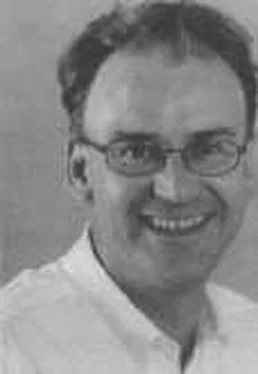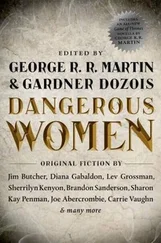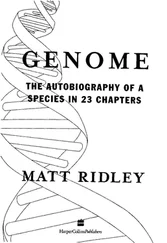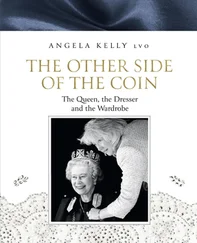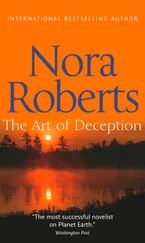The Queen - Matt Ridley
Здесь есть возможность читать онлайн «The Queen - Matt Ridley» весь текст электронной книги совершенно бесплатно (целиком полную версию без сокращений). В некоторых случаях можно слушать аудио, скачать через торрент в формате fb2 и присутствует краткое содержание. Жанр: Старинная литература, на английском языке. Описание произведения, (предисловие) а так же отзывы посетителей доступны на портале библиотеки ЛибКат.
- Название:Matt Ridley
- Автор:
- Жанр:
- Год:неизвестен
- ISBN:нет данных
- Рейтинг книги:4 / 5. Голосов: 1
-
Избранное:Добавить в избранное
- Отзывы:
-
Ваша оценка:
- 80
- 1
- 2
- 3
- 4
- 5
Matt Ridley: краткое содержание, описание и аннотация
Предлагаем к чтению аннотацию, описание, краткое содержание или предисловие (зависит от того, что написал сам автор книги «Matt Ridley»). Если вы не нашли необходимую информацию о книге — напишите в комментариях, мы постараемся отыскать её.
Matt Ridley — читать онлайн бесплатно полную книгу (весь текст) целиком
Ниже представлен текст книги, разбитый по страницам. Система сохранения места последней прочитанной страницы, позволяет с удобством читать онлайн бесплатно книгу «Matt Ridley», без необходимости каждый раз заново искать на чём Вы остановились. Поставьте закладку, и сможете в любой момент перейти на страницу, на которой закончили чтение.
Интервал:
Закладка:
::: 189 :::
been agricultural for less than ten thousand: These are mere eye blinks. For more than a million years before that we were recognizably human and living, mostly in Africa, probably as hunter-gatherers, or foragers, as anthropologists now prefer to say. So inside the skull of a modern city dweller there resides a brain designed for hunting and gathering in small groups on the African savanna.
Whatever humanity 's mating system was then is what is " natural "
for him now.
Robert Foley is an anthropologist at Cambridge University who has tried to piece together the history of our social system: He starts with the fact that all apes share the habit of females leaving their natal group, whereas all baboons share the habit of males leaving their natal group: It seems to be fairly hard for a species to switch from female exogamy to male exogamy, or vice versa. On average, human beings are typical apes in this respect even today. In most societies women travel to live with their husbands, whereas men tend to remain close to their relatives: There are many exceptions, though: In some but not most traditional human societies, men move to women.
Female exogamy means that apes are largely devoid of mechanisms for females to build coalitions of relatives. A young•
female chimpanzee generally must leave her mother 's group and join a strange group dominated by unfamiliar males: To do so, she must gain favor with the females that already live in her new tribe.
A male, by contrast, stays with his group and allies himself with powerful relatives in the hope of inheriting their status later: So much for the ape ' s legacy to mankind: What about the habitat in which he lived? Toward the end of the Miocene era, some 25 million years ago, Africa 's forests began to contract. Drier, more seasonal habitats—grasslands, scrublands, savannas—began to spread. About 7 million years ago the ancestors of mankind began to diverge from the ancestors of modern chimpanzees. Even more than 'chimps and much more than gorillas, mankind 's ancestors moved into these new dry habitats and gradually adapted to them: We know this because the earliest fossils of manlike apes (the australopithecines) were living in places that at the time were not cov-
::: 190:::
The Red Queen
ered by forest—at Hadar in Ethiopia and Olduvai in Tanzania. Presumably, these relatively open habitats favored larger groups as they did for chimps and baboons, the two other open-country primates.
As socioecologists find again and again, the more open the habitat, the bigger the group, both because big groups can be more vigilant in spotting predators and because the food is usually found in a patchier pattern. For reasons that are not especially persuasive (principally the apparently great size difference of males and females), most anthropologists believe the early australopithecines lived in single-male harems, like gorillas and some species of baboon."
But then, sometime around 3 million years ago, the hominid lineage split in two (or more). Robert Foley believes the increasingly seasonal pattern of rainfall made the life-style of the original ape-man untenable, for its diet of fruit, seeds, and perhaps insects became increasingly rare in dry seasons. One line of its descendants developed especially robust jaws and teeth to deal with a diet increasingly dominated by coarse plants. Australopithecus robus-tus, or nutcracker marl, could then subsist on coarse seeds and leaves during lean seasons. Its anatomy supplies meager clues, but Foley guesses that nutcrackers lived in multimale groups, like chimps:" s
The other line, however, embarked on an entirely different path: The animals known as Homo took to a diet of meat. By I.6
million years ago, when Homo erectus was living in Africa, he was without question the most carnivorous monkey or ape the world had ever known. That much is clear from the bones he left at his campsites. He may have scavenged them from lion kills or perhaps begun to use tools to kill game himself. But increasingly, in lean seasons, he could rely on a supply of meat: As Foley and P. C: Lee put it, "While the causes of meat-eating are ecological, the consequences would be distributional and social. " To hunt, or even more, to seek lion kills, required a man to range farther from home and to rely on his companions for coordinated help. Whether as a result of this or coincidentally, his body embarked on a series of coordinated gradual changes. The shape of the skull began to retain more POLYGAMY AND THE NATURE OF MEN
::: 191 :::
juvenile shape into adulthood, with a bigger brain and a smaller jaw.
Maturity was gradually delayed so that children grew slowly into adulthood and depended on their parents longer. 26
Then for more than a million years people lived in a way that couldn 't have changed much: They inhabited grasslands and woodland savannas, first in Africa, later in Eurasia, and eventually in Australasia and the Americas. They hunted animals for food, gathered fruits and seeds, and were highly social within each tribe but hostile toward members of other tribes. Don Symons refers to this combination of time and place as the "environment of evolutionary adaptedness, " or EEA, and he believes it is central to human psychology: People cannot be adapted to the present or the future; they can only be adapted to the past. But he readily admits that it is hard to be precise about exactly what lives people lived in the EEA. They probably lived in small bands; they were perhaps nomadic; they ate both meat and vegetable matter; they presumably shared the features that are universal among modern humans of all- cultures: a pair bond as an institution in which to rear children, romantic love, jealousy and sexually induced male-male violence, a female preference for men of high status, a male preference for young females, warfare between bands, and so on.
There was almost certainly a sexual division of labor between hunting men and gathering women, something unique to people and a few birds of prey. To this day, among the Ache people of Paraguay, men specialize in acquiring those foods that a woman encumbered with a baby could not manage to—meat and honey, for example!'
Kim Hill, at the University of New Mexico, argues that there was no consistent EEA, but he nonetheless agrees that there were universal features of human life that are not present today but that have hangover effects. Everybody knew or had heard of nearly all the people they were likely to meet in their lives: There were no strangers, a fact that had enormous importance for the history of trade and crime prevention, among other things. The lack of anonymity meant that charlatans and tricksters could rarely get away with their deceptions for long.
::: 192 :::
The Red Queen
Another group of biologists at Michigan rejects these EEA arguments altogether with two arguments. First, the most critical feature of the EEA is still with us: It is other people: Our brains grew so big not to make tools but to psychologize one another. The lesson of socioecology is that our mating system is determined not by ecology but by other people—by members of the same gender and by members of the other gender. It is the need to outwit and dupe and help and teach one another that drove us to be ever more intelligent.
Second, we were designed above all else to be adaptable. We were designed to have all sorts of alternative strategies to achieve our ends. Even today, existing hunter-gatherer societies show enormous ecological and social variation, and they are probably an unrepresentative sample because they mostly occupy deserts and forests, which were not mankind 's primary habitat. Even in the time of Homo trectus, let alone more modern people, there may have been specialized fishing, shore-dwelling, hunting, or plant-gathering cultures. Some of these may well have afforded opportunities for wealth accumulation and polygamy. In recent memory there was a preagricultural culture among the salmon-fishing Indians of the Pacific Northwest of America that was highly polygamous: If the local hunter-gathering economy favored it, men were capable of being polygamous and women were capable of joining harems over the protests of the preceding co-wives: If not, then men were capable of being good fathers and women jealous monopolizers: In other words, mankind has many potential mating systems, one for each circumstance.28
Читать дальшеИнтервал:
Закладка:
Похожие книги на «Matt Ridley»
Представляем Вашему вниманию похожие книги на «Matt Ridley» списком для выбора. Мы отобрали схожую по названию и смыслу литературу в надежде предоставить читателям больше вариантов отыскать новые, интересные, ещё непрочитанные произведения.
Обсуждение, отзывы о книге «Matt Ridley» и просто собственные мнения читателей. Оставьте ваши комментарии, напишите, что Вы думаете о произведении, его смысле или главных героях. Укажите что конкретно понравилось, а что нет, и почему Вы так считаете.
